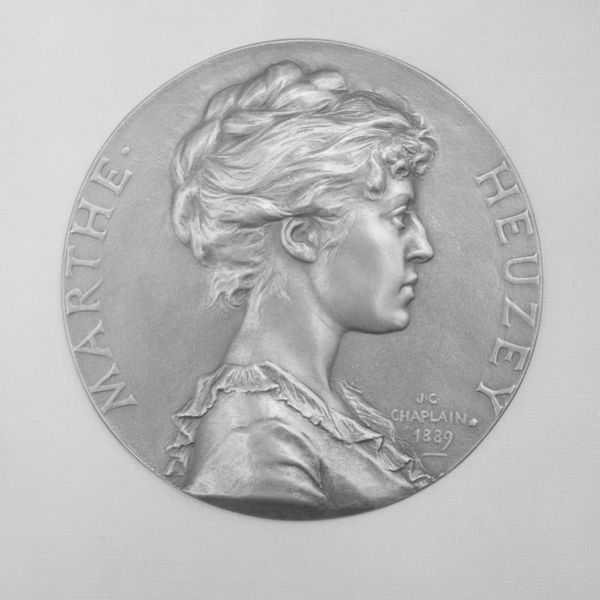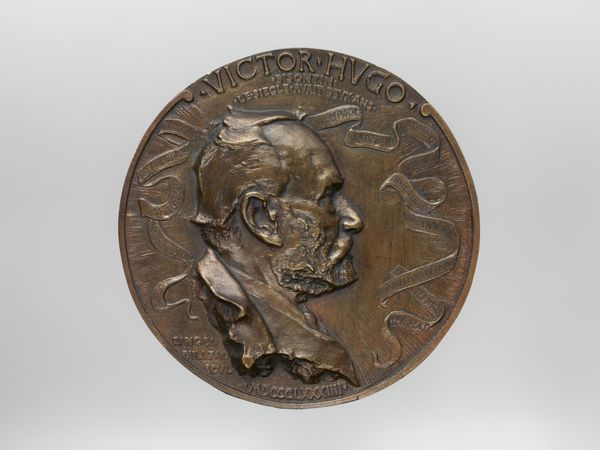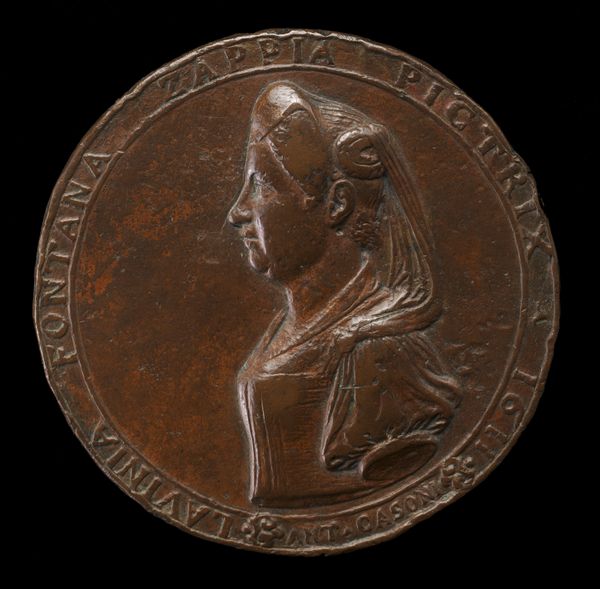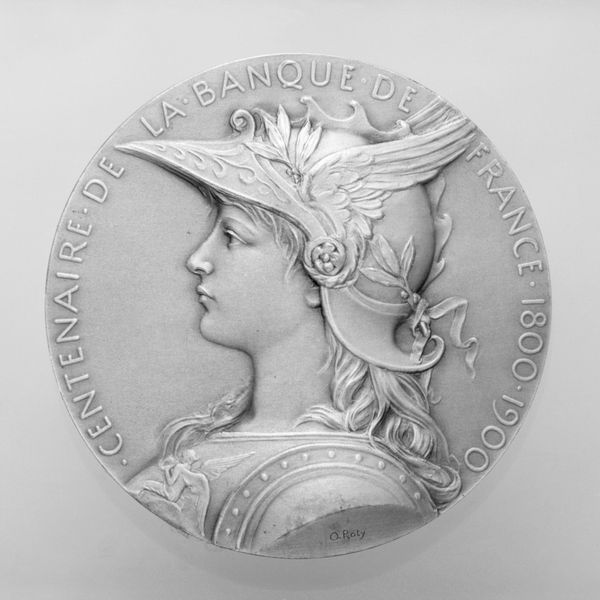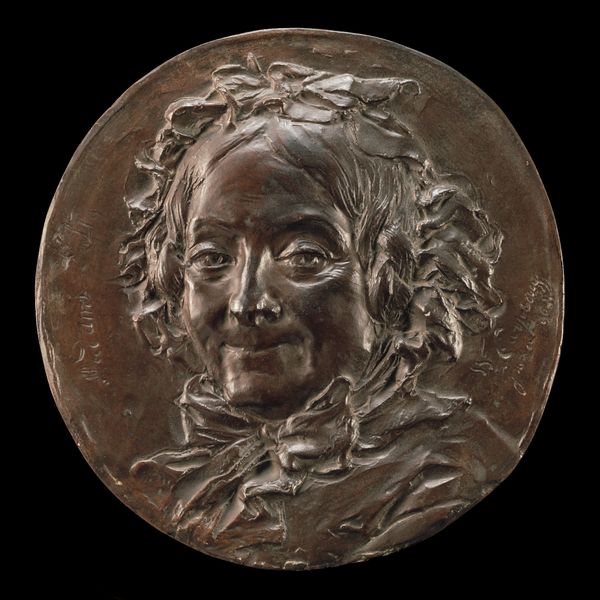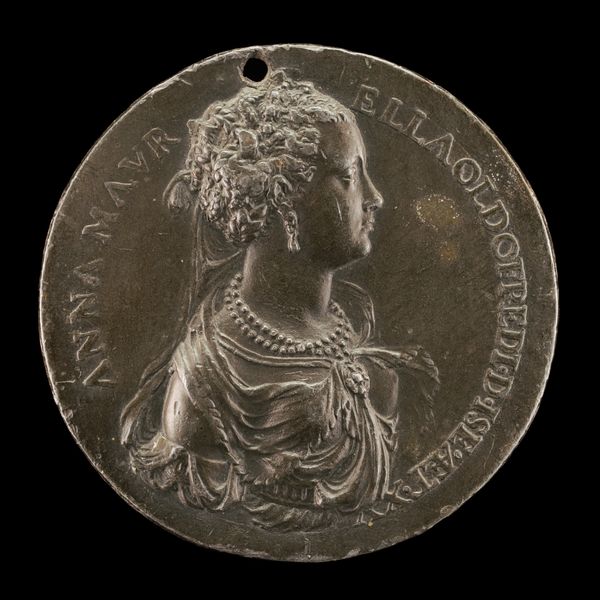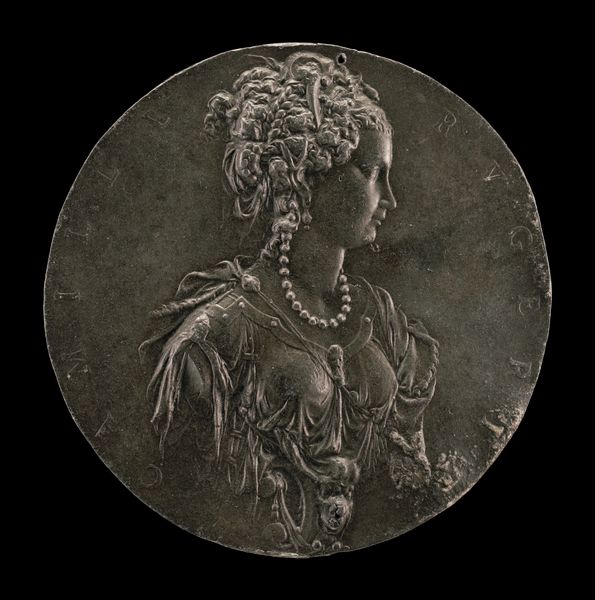
Dimensions: diameter: 38.1 cm (15 in.); depth: 5.8 cm (2 1/4 in.)
Copyright: Public Domain
Curator: What a striking portrait! Antoine Louis Barye rendered this image of "Emile Diaz, Son of the Painter" sometime between 1850 and 1875. It’s a bronze relief, currently residing at The Art Institute of Chicago. What's your immediate reaction? Editor: Brooding. Absolutely brooding! It has such a weighty presence. Is it the patinated bronze or the somber profile of young Emile? I also love how the sitter is presented in the roundel form! There is almost something timeless and modern in its rendering, even as its artistic roots are very traditional. Curator: Barye was known for his animal sculptures, but this piece suggests a sensitive exploration of human character, wouldn't you agree? The almost classical profile contrasts interestingly with what feels like an emerging naturalism. It has that romantic longing—you know, the kind that just makes your chest ache a little. Editor: Absolutely! This echoes a powerful romanticism. I think this hints at larger power dynamics, though. I'm particularly interested in the piece in its engagement with societal structures of the 19th century. Portraiture was not just about likeness; it signified social standing, legacy. Placing "son of the painter" on the medallion tells me something of importance was being conveyed by presenting Emile this way, even within artistic circles. Curator: Yes, there’s a fascinating interplay between individual identity and social identity on display here! The decision to explicitly identify Emile through his lineage – an artistic lineage at that - speaks volumes. Editor: Right. We could analyze the gaze of the young Emile, of course, and see if we discern something deeper in his inner world, his subjectivity, as it were. I see a child situated and burdened, however gloriously, by what’s come before him. And then I begin to question the politics of the portrayal itself! Curator: So you feel he's under pressure in this depiction? A fascinating read! To me, this bronze roundel offers a quietly profound and lingering intimacy that draws you back to it, again and again. Editor: I think we have an interesting clash between that which feels and is indeed sentimental, and that which also reflects and embodies structures of artistic power. The dialogue is, at times, very subtle, and in other places is deeply revealing! Thank you for drawing attention to this amazing piece!
Comments
No comments
Be the first to comment and join the conversation on the ultimate creative platform.



